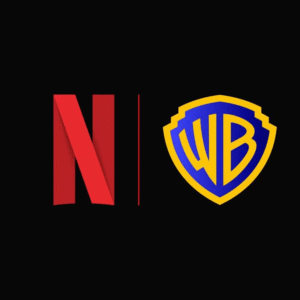12 Best Social Media Scheduling Tools for 2025
Managing multiple social media accounts can be overwhelming, but the right tools make it simple. Here are the 12 best social media scheduling tools of 2025 to help you plan, automate, and optimize your content effortlessly.

12 Best Social Media Scheduling Tools for 2025 by Brandwatch
Managing multiple social media profiles is now a full-time responsibility for many marketers, brands, and entrepreneurs. Consistent updates and engagement are necessary for platforms such as Facebook, Instagram, LinkedIn, X (formerly Twitter), TikTok, Pinterest, YouTube, and emerging players such as Threads.
To maintain consistency without burning out, it’s best to use social media scheduling tools. Our ability to plan posts, automate publishing, optimize timing, manage multiple accounts, and track analytics from a single dashboard is made possible by these tools. This guide will examine the 12 most effective social media scheduling tools in 2025, their features, and who will reap the most benefits from each.
Why Social Media Scheduling Tools Are Essential
Social media algorithms give preference to consistency. If your brand is absent for a few days or weeks, engagement will decrease and visibility will suffer. By using a scheduling tool, content can be live at peak engagement times, even while you sleep.
Other advantages are:
Time efficiency: Batch-create and schedule content for days or weeks ahead.
Improved planning: Use visual calendars to align content with campaigns, holidays, and launches.
Multi-platform control: Post to several networks without logging into each one.
Team collaboration: Assign roles, approve content, and manage workflows seamlessly.
Data-driven decisions: Access analytics to fine-tune strategy and improve ROI.
Key Features to Look for in a Scheduling Tool
Prioritize these capabilities when evaluating platforms:
Multi-platform publishing (Facebook, Instagram, LinkedIn, TikTok, YouTube, Pinterest, X, etc.)
Visual content calendar with drag-and-drop functionality
Approval workflows for team collaboration
Content library for storing reusable assets
AI-powered recommendations for optimal posting times and hashtags
Built-in analytics to track engagement, growth, and ROI
Integration with ads to manage paid and organic campaigns together
Social listening to monitor brand mentions and sentiment
Top 12 Social Media Scheduling Tools in 2025
Brandwatch Social Media Management is a complete toolkit for publishing, scheduling, monitoring, and analytics.
Key Features:
Unified content calendar for all major platforms, including ad scheduling.
Team collaboration with roles, task assignments, and approvals.
Shared media library for brand-consistent visuals.
AI-driven posting recommendations.
Integrated social inbox for managing comments and DMs.
Advanced analytics with competitor benchmarking.
Suitable for medium-to-large businesses, agencies, and enterprises that require multi-platform control and extensive analytics.
2. Buffer – Best for Beginners
Buffer’s clean and intuitive interface makes it ideal for individuals and small businesses starting their scheduling journey.
Key Features:
Queue-based scheduling with customizable posting times.
Multi-platform posting with tailored captions per platform.
Built-in link-in-bio tool for Instagram and TikTok.
Basic analytics for tracking post performance.
It is suited for solo entrepreneurs and small teams who prioritize simplicity over advanced features.
3. Later – Best for Visual Content Planning
Drag-and-drop calendar with Instagram grid preview.
Media library for organizing images and videos.
Hashtag suggestions and saved captions.
Best-time-to-post analytics.
Perfect for brands that prioritize visual storytelling heavily.
4. CoSchedule – Best for Content Marketing Integration
CoSchedule brings social media scheduling to the forefront with a comprehensive marketing calendar for blogs, emails, and campaigns.
Key Features:
Unified marketing calendar for all content types.
ReQueue feature to recycle evergreen posts.
Workflow automation for multi-platform campaigns.
Ideal For: Marketers who need to align social posts with broader content marketing strategies.
5. Zoho Social – Best for CRM Integration
Part of the Zoho ecosystem, Zoho Social links social activity directly with CRM data.
Key Features:
SmartQ posting time recommendations.
Real-time monitoring of brand mentions.
Native Zoho CRM integration.
Ideal For: Businesses already using Zoho’s suite of tools.
6. Hootsuite – Most Versatile Legacy Tool
One of the oldest names in the game, Hootsuite offers robust scheduling and analytics.
Key Features:
Multi-platform auto-scheduling.
Visual calendar with drag-and-drop.
Team collaboration tools.
Optional add-ons for advanced analytics and social listening.
Ideal For: Organizations seeking a proven, feature-rich scheduling tool.
7. Sprout Social – Best for Premium Analytics
Sprout Social is a premium choice offering exceptional usability and reporting capabilities.
Key Features:
AI-driven optimal posting times.
Integrated social inbox for engagement.
Advanced reporting with competitor analysis.
Approval workflows for teams.
Ideal For: Businesses and agencies willing to invest for top-tier analytics and engagement tools.
8. Sendible – Best for Agencies
Sendible excels at managing multiple brands or clients from one platform.
Key Features:
Platform and blog post scheduling (WordPress, Medium).
White-label options for agencies.
Content library and curation tools.
Client-specific dashboards and reports.
Ideal For: Agencies and consultants managing numerous accounts.
9. Loomly – Best for Collaborative Content Creation
Loomly guides teams through every stage of post creation, approval, and publishing.
Key Features:
Step-by-step workflow from draft to approval.
Content inspiration with trending topics.
Platform-specific post customization.
Basic analytics and community management.
Ideal For: Teams needing structured collaboration and idea generation.
10. SocialBee – Best for Evergreen Content Recycling
SocialBee focuses on category-based scheduling for a consistent evergreen content flow.
Key Features:
Organize posts into content categories.
Automatic recycling of evergreen posts.
Multi-caption variations for each post.
Simple analytics dashboard.
Ideal For: Small businesses and solopreneurs with a library of timeless content.
11. Tailwind – Best for Pinterest & Instagram Marketing
Tailwind is a niche tool specializing in Pinterest and Instagram growth.
Key Features:
SmartSchedule for optimal Pin posting.
Tailwind Communities for content sharing.
Instagram nine-grid feed preview.
Saved hashtag lists and analytics.
Ideal For: Creators and brands prioritizing Pinterest traffic.
12. Sprinklr – Best for Global Enterprise Operations
Sprinklr is a high-end, enterprise-grade platform managing all aspects of digital presence.
Key Features:
Omnichannel scheduling, including email and SMS.
AI-driven posting optimization.
Multi-layer approval workflows.
Advanced compliance and content checks.
Ideal For: Large organizations needing scalability, compliance, and global campaign coordination.
Choosing the Right Tool for Your Needs
When selecting a social media scheduler, consider:
Team Size – Solopreneurs may prefer Buffer or Later, while large teams benefit from Brandwatch or Sprinklr.
Platform Priorities – Pinterest users should lean toward Tailwind; visual brands toward Later or Loomly.
Budget – Compare pricing tiers and potential ROI.
Analytics Needs – If detailed reporting is key, Sprout Social or Brandwatch may be worth the investment.
Final Thoughts
In 2025, it’s imperative to use a social media scheduling tool for consistency, efficiency, and growth. There is a scheduler that is perfectly tailored to your workflow, whether you’re a content creator, a marketing team, or a global enterprise. By investing in the right platform, you can free up hours, enhance content quality, and keep your brand active 24/7. The result? A more strategic approach to social media marketing can lead to increased engagement and brand visibility.






